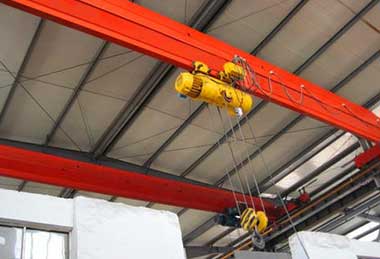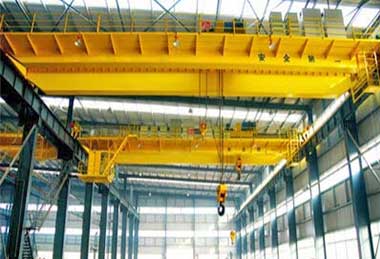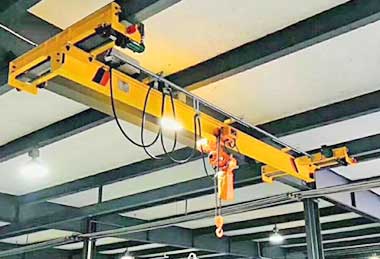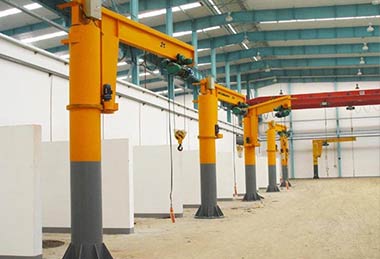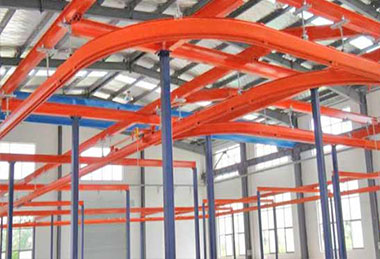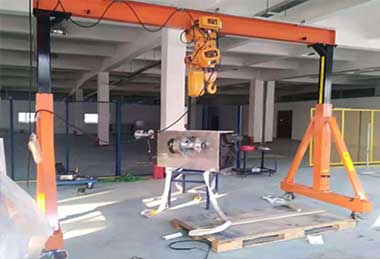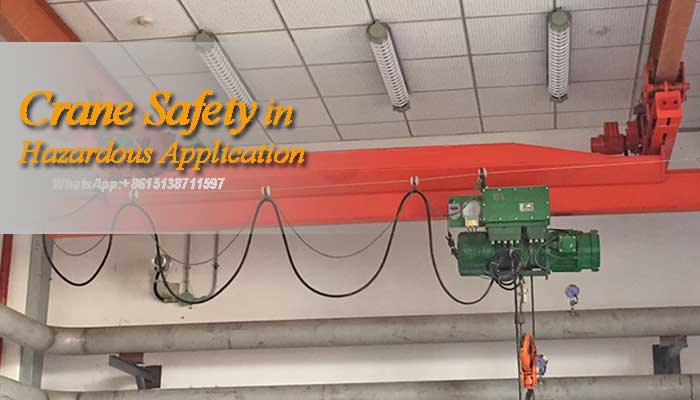
Crane Safety: Overhead Crane in Dangerous Situations & Hazardous Environments
Manufacturing environments are generally prone to risks and the possibility for injury that comes with them, whether it's a production environment including automated guided vehicles (AGVs) or a grain storage and processing plant.
Understanding as much as possible about industrial dangers and how to prevent them is the foundation for being cautious and avoiding worst-case scenarios. Thankfully, organizations like the Occupational Safety and Health Administration (OSHA) have already done a lot of the legwork for you, so all you have to do now is take what you've learned and apply it to your industrial situation.
Here's a rundown of what you need to know about manufacturing in hazardous environments.
How are 'hazardous conditions' defined?
Hazardous circumstances are self-explanatory: they exist when materials exist that could cause injury or significant facility damage. The phrase is frequently used to allude to the danger of explosions or fires in industrial plants, but it can also relate to risks linked with the use of machines, large weights, vehicles, and other factors.
In other words, the situation is hazardous if there are materials or conditions present that could hurt someone if not handled properly.
The classes and divisions of hazardous materials
To avert tragedy, different materials demand different safeguards, hence a categorization system is used to help machine operators unify their safety criteria.
Because many manufacturers are concerned about explosions and fires, these classifications apply only to materials that are potentially combustible.
Hazardous compounds are classified into three categories based on their type:
- Class I.Gases and vapors that are potentially explosive or flammable
- Class II: Dusts that are potentially combustible or conduct electricity.
- Class III: Fibers or flyings with the potential to ignite.
The level of risk associated with the presence of the material is then determined by division in order to drill down on the requisite safety specifications:
- Division I: Under typical operating conditions, hazardous material is present in a potentially explosive or flammable level.
- Division II: In the event of a defect or other unanticipated error, hazardous material is only present in a potentially explosive or flammable amount.
Group classifications, in addition to class and division, go into greater information regarding the type of material and the safety criteria that surround it.
A complete list may be found in our page on explosion avoidance, which can be accessed here.
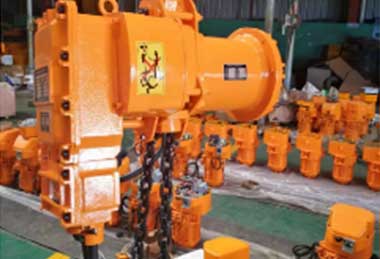
Explosion proof electric chain hoist
Electric chain hoists mounted on hook, lug, manual or electric hoist trolley for types of electric chain hoist cranes with capacity of 500kg, 5 ton, 10 ton, 32 ton.
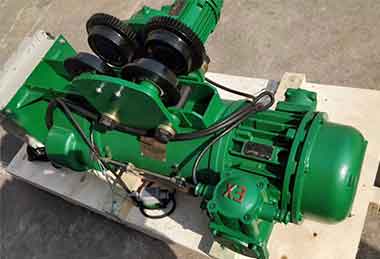
Explosion proof wire rope hoist
Wire rope hoists with explosion proof, flame proof & spark resistant hoist designs to secure your electric hoist crane. Check wire rope explosion proof hoists now.
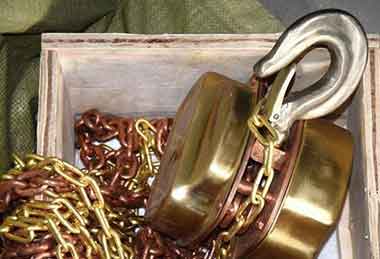
Explosion proof manual hoist
Explosion-proof manual hoists are widely adopted in the hazard environments with the potential danger of fire and explosion, such as, petroleum, petrochemical, gas station, oil depot and gas extraction, chemical industry, electric power, mining, electronics, railway, etc.
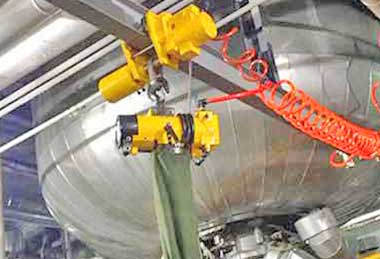
Explosion proof air hoist
Air hoist & pneumatic hoist is a compressed air powered hoist & air operated hoists, various hoist designs, explosion proof, shock proof, wide specification.
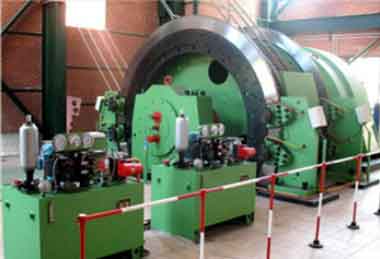
Explosion proof pulling & hoisting winch
Mining winch & types of mining winch systems for gold, copper,silver, iron, zinc & coal mine.Underground mining winch & explosion proof winch for sale.
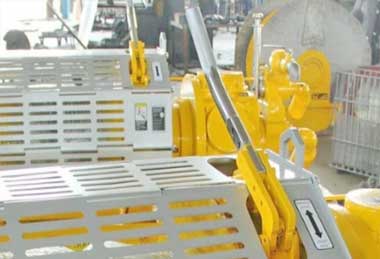
Explosion proof air winch
Air winch & pneumatic winch is an air powered winch or air operated winch for pulling & hoisting loads of 500kg to 10 ton, explosion proof pneumatic winch
The basics of explosion prevention
Explosions deserve special attention because they are one of the most dangerous dangers for producers. There are a few simple things that can be done to avoid them.
1. Perform a risk assessment
This rule applies to all hazards in the workplace. To offer managers a complete picture of the safety problems their production poses, a detailed risk assessment should be undertaken as often as possible, taking into account all hazardous products and machinery.
2. Ensure equipment is of the correct specification
All apparatus involving the three elements of a potential explosion (fuel, oxygen, and heat) must meet the appropriate safety standards for the environment in which it is utilized. Enclosing hazardous materials can be done in a variety of ways. This should include the class and division of the materials being utilized, as well as the safe operating temperatures.
Here is a comprehensive list of enclosure methods.
3. Maintain equipment regularly
To ensure that equipment is in good operating order, a regular maintenance schedule should be in place. Enclosures, in particular, should be checked for any leaks and cleansed of any layers of dust or debris that could cause an undesirable temperature increase.
Any maintenance, whether it's for explosion prevention or not, should follow OSHA's 'Lock-Out Tag-Out' method, which may be found here.
4. Train staff to deal with hazardous materials
All employees who come into touch with hazardous chemicals or situations should be well taught in machine operation and safety protocols, with regular refresher training to avoid complacency or overconfidence, which can lead to human mistake.
Other common hazards for manufacturers
When working in dangerous environments, explosive materials aren't the only thing to worry about. There are a number of other typical dangers that contribute to a dangerous workplace. The following are some of the most frequent, although it's crucial to do a risk assessment to identify the specific dangers that each manufacturing plant faces, including:
1. Falls
In 2017, 366 construction workers died as a result of preventable falls. In 2018, the Bureau of Labor Statistics (BLS) recorded 240,160 injuries from slips, trips, and falls. In each production environment, fall hazards should be identified, and employees should be trained to recognize dangers and be aware.
The OSHA Fall Prevention Campaign has provided helpful, free materials for employers and employees.
2. Electrical exposure
The BLS discovered over a thousand injuries due by 'exposure to electricity.' Electrical problems and shocks can be avoided with proper equipment and industrial maintenance, as well as workers receiving electricity-specific safety training.
3. Injuries caused by machinery
In 2018, the Bureau of Labor Statistics (BLS) recorded tens of thousands of instances involving workers who were gravely harmed by machinery. People were entangled in equipment and had shattered components fall on them from a height, among other things.
The best preventative precaution that manufacturers may take in this case is the aforementioned diligence in operation and safety training, as well as regular maintenance and the deployment of safety guards or barriers. Any manufacturer who employs autonomous guided vehicles should take the same measures.
Fail-safe machinery
The interplay between human workers and their machine counterparts is involved in the vast majority of the dangerous scenarios outlined above. As a result, it's critical to plan ahead and invest in machinery that includes the necessary safety features and fail-safes.
Maintenance has also played a significant role. The ability to take preventative action before machinery fails is a critical component of the maintenance equation. Wear-indicator nuts like the ones we make do this while also reducing the risk of human injury.
Wear-indicator nuts are designed to indicate the status of repair of screw jacks that, in many situations, carry substantial loads. It is possible to plan critical repairs that will prevent harm and manufacturing downtime by installing wear-indicator nuts.
Actuators, too, are a potential source of danger. Our actuators are equipped with fail-safe ball screws that bear weight in the case of a power outage or breakdown, making them more precise, predictable, and programmable than hydraulic competitors.
Ball screw actuators with wear indicator nuts aren't the only preventative measures worth adopting, but they demonstrate the seriousness with which manufacturing safety should be treated.
Any potentially hazardous situation should be dealt with in a proactive rather than reactive manner.
Safe crane meet your requirements in hazardous applications
As a safety crane manufacturer and supplier with 34 years of glory and expertise, we are definitely can supply the overhead travelling cranes with high safty to ensure your manufacturing in hazzardous and dangerous environments and types of industrial cranes and overhead hoist systems are available which include , explosion proof overhead cranes with single girder crane design and double girder crane design, A frame gantry crane with grab and a variety of small-scale mining hoisting equipment like electric chain hoist and electric mining winch, and manual handling hoists, etc. The hand operation hoist are very convenient for material handling in potentially hazardous applications which no electricity supply.
